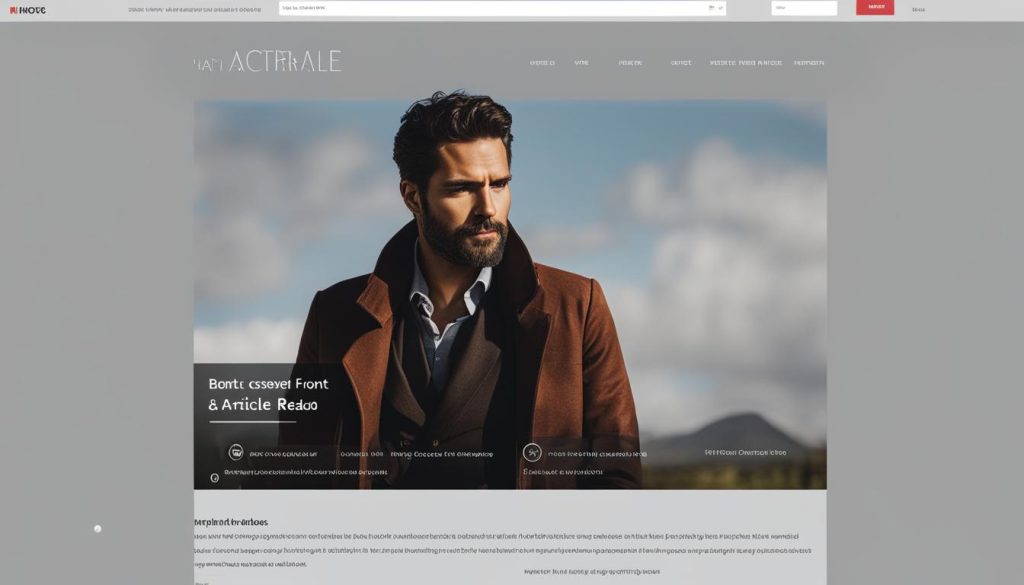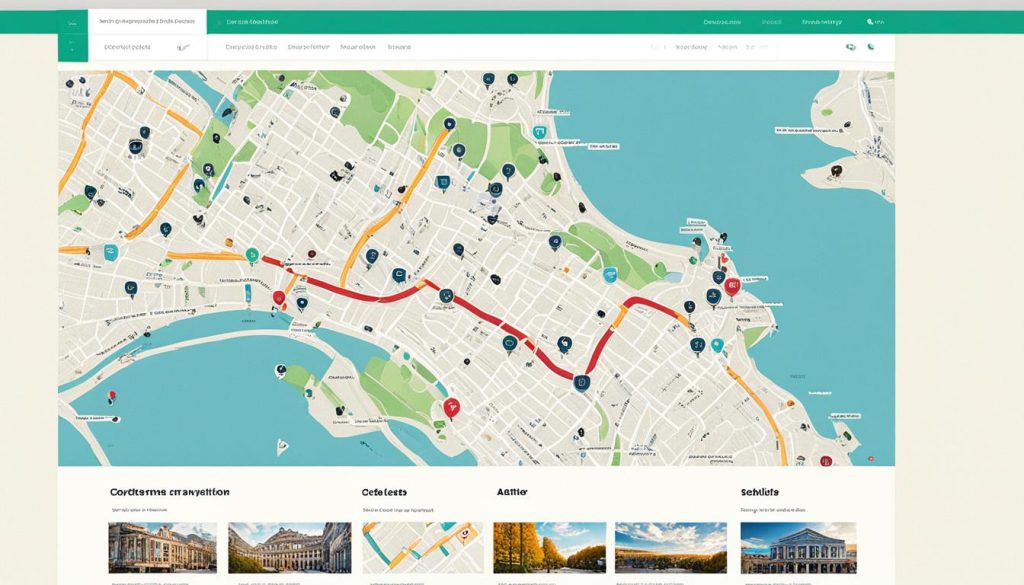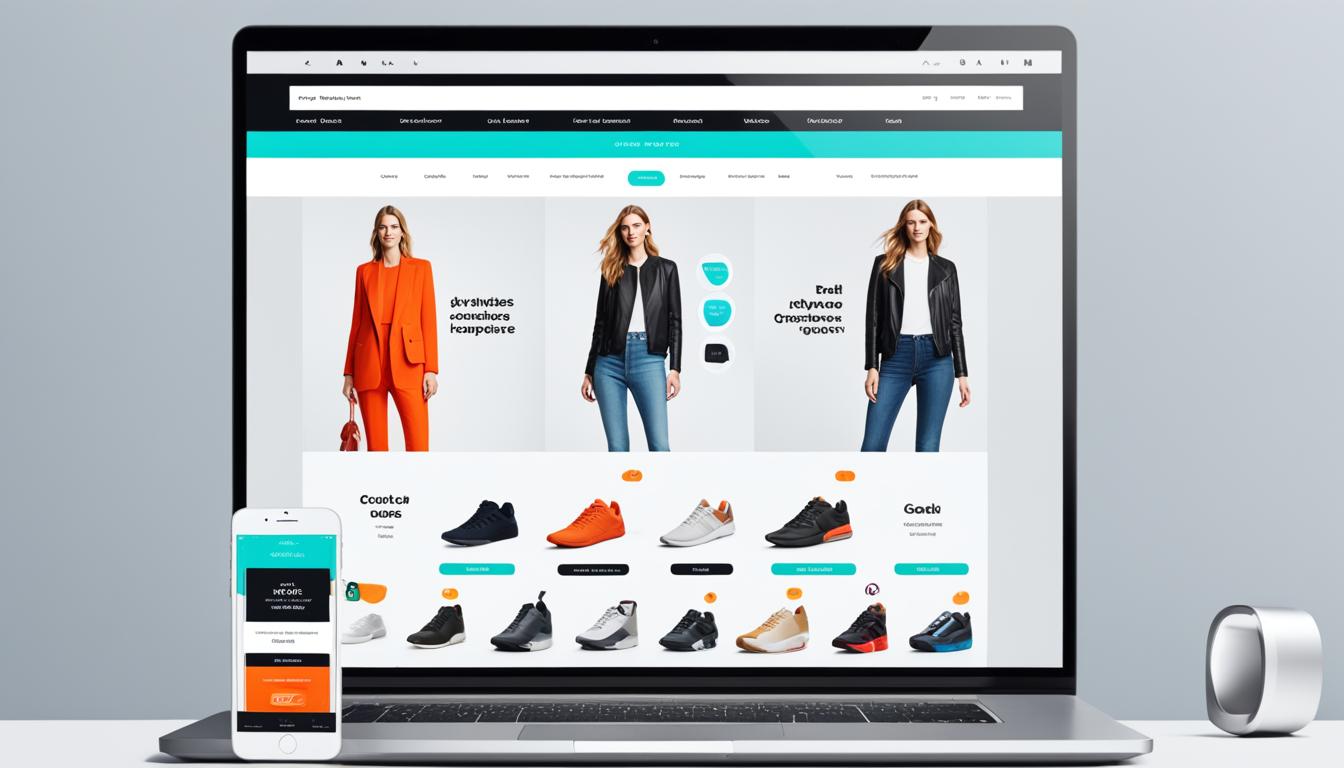Web Design: What Makes a Good Website (6 Key Qualities)
Did you know that 75% of users assess a company’s credibility based on its website design? That’s right, your website plays a crucial role in shaping the perception of your brand. A good website goes beyond just aesthetics; it incorporates key qualities that enhance user experience, mobile responsiveness, SEO optimization, easy navigation, and visual appeal.
Key Takeaways:
- User experience is a vital aspect of web design and impacts your brand’s credibility.
- Mobile responsiveness is crucial as more users browse the web on their smartphones.
- SEO optimization helps improve search engine visibility and drive organic traffic.
- Easy navigation enhances user satisfaction and leads to higher conversion rates.
- Visual appeal captivates users and keeps them engaged with your website.
Clear Purpose
A good website should have a clear purpose that aligns with user intent. When designing a website, it’s important to understand the needs and goals of your target audience. This can be achieved by creating product personas and ideal customer profiles that represent different segments of your audience.
By understanding the motivations, behaviors, and preferences of your users, you can tailor your website to meet their specific needs. This means creating individual webpages with distinct purposes that align with user intent. Each page should have a clear value proposition that communicates the benefits of your products or services.
In order to effectively convey the purpose of your website, it’s essential to include compelling calls to action throughout your site. These can be in the form of buttons, links, or forms that prompt users to take the desired action, such as making a purchase, signing up for a newsletter, or requesting more information. Calls to action should be strategically placed and visually appealing to encourage user engagement.
A clear purpose not only helps users understand the value of your website but also improves search engine optimization (SEO). When your website has a clear purpose that aligns with user intent, search engines are more likely to rank your site higher in search results, increasing its visibility to potential customers.
In summary, when creating a website, it’s crucial to have a clear purpose that aligns with user intent. By understanding your target audience through product personas and ideal customer profiles, you can design individual webpages with distinct purposes that communicate the value of your products or services. Including compelling calls to action throughout your site will encourage user engagement and improve SEO performance.
Quality Content
When it comes to building a successful website, quality content is paramount. It not only engages and informs users but also plays a crucial role in search engine optimization (SEO). However, it’s important to create content that is primarily user-centric, focusing on the needs and interests of the readers.
While creating content, it’s also essential to consider SEO best practices. By understanding the importance of keywords and optimizing your content accordingly, you can improve your website’s visibility and reach a wider audience.
One effective strategy for organizing your content is through the use of pillar pages and topic clusters. Pillar pages are comprehensive pieces of content that cover a broad topic, while topic clusters are smaller, related articles that link back to the pillar page. This helps search engines understand the relevance and authority of your content, ultimately improving your rankings.
Additionally, creating different content categories can enhance the user experience and provide a wide range of resources. Some examples of content categories include guides, video tutorials, and product insights. By offering diverse content types, you can cater to different user preferences and provide valuable information in various formats.
To summarize, quality content that is user-centric and optimized for SEO is essential for the success of your website. By using pillar pages, topic clusters, and different content categories, you can create a comprehensive and engaging website that both users and search engines will appreciate.

Outstanding UX and UI
User experience (UX) and user interface (UI) design are integral components of a successful website. UX focuses on the emotions and reactions users experience while using the site, while UI pertains to the visual elements they see and interact with. A good website boasts clean and coherent design, complemented by easy navigation.
An outstanding user experience can be achieved through effective UX design, which involves creating a seamless user journey and organizing the site in a user-friendly manner. It is crucial to consider accessibility for users with limitations, ensuring that everyone can navigate the site effortlessly.
One of the key aspects of UX and UI design is a clean aesthetic. A clutter-free layout enhances the overall user experience and allows users to focus on the content that matters. Avoid overwhelming users with excessive visual elements that may distract or confuse them. Instead, aim for a coherent design that aligns with your brand identity and conveys a sense of professionalism.
Incorporating engaging elements like videos and animations can also enhance the user experience, providing a dynamic and interactive interface. However, use these elements sparingly and purposefully, ensuring they contribute to the overall user experience and do not hinder site performance.

Easy navigation is another crucial aspect of UX and UI design. Users should be able to find what they are looking for quickly and intuitively. Implement clear and concise menus, breadcrumbs, and search functionalities to facilitate seamless navigation throughout the site.
A combination of functionality and aesthetics is key to providing an outstanding user experience. By incorporating exceptional UX and UI design principles, you can create a website that not only looks visually appealing but also delivers a smooth and enjoyable user experience.
| Benefits of Outstanding UX and UI Design | Effective Implementation Strategies |
|---|---|
|
|
Great Performance
Website performance plays a crucial role in delivering a positive user experience. To ensure great performance, regular website monitoring is necessary. By checking for bugs, broken links, and other issues, I can keep your site running smoothly.
One key aspect of website performance is loading speed. Slow-loading websites can lead to high bounce rates and user frustration. That’s why I focus on optimizing your site’s loading speed, ensuring that visitors can access your content quickly and effortlessly.
Another essential factor in improving website performance is SEO optimization. By implementing effective SEO strategies, such as avoiding duplicate content and optimizing site speed, I can help boost your website’s visibility to potential customers. This can lead to increased organic traffic and better search engine rankings.
With the increasing use of mobile devices, mobile optimization is a must. Mobile traffic continues to grow, and it’s crucial that your website is optimized for different devices and screen sizes. By ensuring a seamless user experience across various devices, I can help you reach and engage with a wider audience.
FAQ
What are the key qualities of a good website?
How can I ensure my website has a clear purpose?
Why is quality content important for my website?
How can I ensure an outstanding UX and UI design for my website?
What can I do to improve my website’s performance?
- How Strategic SEO Drove Growth for a CPAP E-commerce Brand - July 24, 2025
- Top 3 SEO Companies in Toronto: An Analytical Comparison - July 23, 2025
- SEO for Entry Door Services - April 24, 2025





















Post Comment
You must be logged in to post a comment.